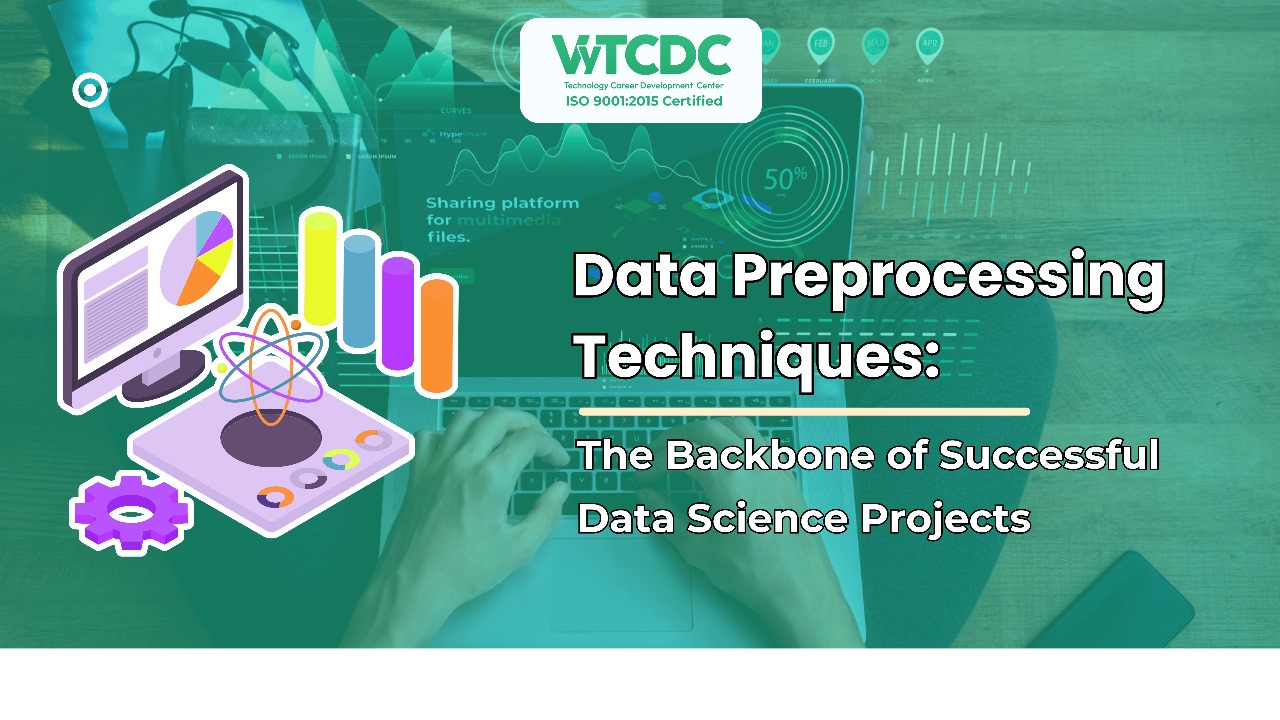Introduction
Like a rough diamond, raw data has much potential but is still far from reaching its full luminescence. The same care and attention to detail that goes into cutting, polishing, and shaping a diamond to bring out its brilliance also goes into meticulously refining raw data before it may yield insightful information. Data preprocessing is a crucial initial step in any comprehensive data science project that involves converting unstructured, raw data into a format that can be examined efficiently.
Imagine attempting to create a stunning piece of jewelry out of an uncut, rough diamond; regardless of the jeweler’s level of talent, the finished item will be subpar if the diamond needs to be adequately prepared. In data science, if the data is erroneous, missing, or unorganized, no matter how complex or brilliant your algorithms and models are, they will not perform well.
Data preparation is the procedure of cutting and polishing raw data into a “rough diamond.” It guarantees that the data is in a format that machine learning models can interpret, clean out errors, and integrate data from many sources. Without it, even the most potent models are susceptible to mistakes that yield inaccurate or misleading data.
What is Data Science?
Data science is an interdisciplinary field that uses mathematics, statistics, computer science, and domain knowledge to derive insights from data. It involves various methodologies, including data collecting and analysis, predictive modeling, and machine learning. The ultimate purpose of data science is to identify patterns, make predictions, and provide actionable insights that lead to better decision-making.
Data science is utilized throughout industries, including healthcare, finance, and marketing, to solve complicated problems, forecast trends, and optimize company strategy. It enables firms to leverage the power of data, whether by anticipating stock market movements or increasing customer experience.
What is Data Preprocessing?
Data preprocessing is the process of cleaning, transforming, and structuring raw data so that machine learning models and statistical methods may efficiently use it. It addresses typical difficulties such as missing values, duplicate records, outliers, and incompatible data formats. Preprocessing the data appropriately guarantees that data science models can accurately examine and learn from it.
Standard Techniques in Data Preprocessing:
- Data Cleaning:
Raw data frequently includes noise, missing numbers, and errors. Data cleansing is the method of detecting and correcting these problems. This could consist of filling in missing values, fixing mistakes, or eliminating extraneous data points. For instance, if a dataset has partial entries, missing values may be replaced with the column’s mean or mode to provide consistency while preserving significant insights.
- Data Transformation:
After the data has been cleaned, it is frequently needed to be translated into an analysis-ready format. Standard techniques consist of:
- Normalization: Scaling data to fit inside a defined range, usually 0 to 1. This is especially handy when the features have varying ranges.
- Standardization: It involves focusing the data by removing the mean and dividing by the standard deviation to ensure that all features contribute equally to the model.
- Log transformation: Used on skewed data to make distributions more symmetric.
- Feature Engineering:
Data preprocessing frequently includes developing new features from existing ones, a technique known as feature engineering. This could include defining terms for interactions between variables or developing new features based on domain expertise. For example, combining “age” and “income” to form an “income-to-age ratio” may reveal deeper trends in the data.
- Data Reduction:
Large datasets may contain irrelevant or duplicated features that do not improve the predicting model’s performance. Data reduction approaches, such as Principal Component Analysis (PCA) or feature selection methods, help lower the dataset’s dimensionality while maintaining crucial information, resulting in increased computational efficiency.
- Data Encoding:
Machine learning methods cannot process categorical data directly. Data encoding, also known as one-hot encoding or label encoding turns category information into numerical formats. For example, if a dataset includes a “country” column with values such as “USA,” “India,” and “Germany,” encoding converts those descriptions into numerical representations that the algorithm can understand.
- Handling Imbalanced Data:
In real-world datasets, some classes may be overrepresented, resulting in imbalanced data that might bias model predictions. To balance the dataset, techniques such as oversampling, undersampling, and SMOTE (Synthetic Minority Oversampling Technique) are employed to ensure that the model gives equal attention to each class.
Why is Data Preprocessing Important in a Data Science Course?
While data science seeks to develop predictive models and reveal insights, data preprocessing ensures that the data is prepared for sophisticated analysis. Here’s why preprocessing is essential:
- Reduces Bias and Errors: Raw data is frequently full of flaws and inconsistencies. Data preparation cleans and organizes the data, averting misleading results due to incorrect input.
- Improves Model Performance: Well-preprocessed data results in more accurate and dependable machine learning models. A model trained on proficient data outperforms others because it can effortlessly recognize patterns and relationships.
The Synergy between Data Preprocessing and Data Science:
Data preprocessing is intrinsically linked to data science; without it, even the most complex algorithms risk failure. Like constructing a house, data science represents architectural genius and construction, whereas preprocessing serves as the foundation, establishing the sturdy foundation upon which everything else is built. Preprocessing prepares data so that it may be used and trusted by machine learning models, which power data science. In essence, it fills the void between raw data and valuable insights.
Conclusion:
Data preprocessing is the invisible engine that powers the effectiveness of data science training program efforts. Cleaning, converting, and structuring data guarantees that machine learning models produce correct and useful results. While data science provides strong approaches for making assumptions and gaining insights, preprocessing guarantees that the data fed into these models is of the most excellent quality. Together, they form the foundation of any successful data-driven effort.
For data scientists, mastering preprocessing is as essential as mastering the algorithms themselves because, in the end, your hypotheses are only as good as the data on which they are based.
Established in 2002, VyTCDC has been vy ventures’ premier technology incubator since 2002. It offers transformative technical training and internships across its specialized entities.
Contact Us:
Phone
+917338811773
+918925903732
Email: careers@vytcdc.com






